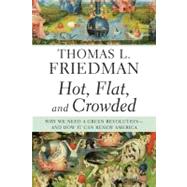
Note: Supplemental materials are not guaranteed with Rental or Used book purchases.
Purchase Benefits
What is included with this book?
| Where We Are | |
| Where Birds Don't Fly | p. 3 |
| Today's Date: 1 E.C.E. Today's Weather: Hot, Flat, and Crowded | p. 26 |
| How We Got Here | |
| Our Carbon Copies (or, Too Many Americans) | p. 53 |
| Fill'Er Up with Dictators | p. 77 |
| Global Weirding | p. 111 |
| The Age of Noah | p. 140 |
| Energy Poverty | p. 154 |
| Green Is the New Red, White, and Blue | p. 170 |
| How We Move Forward | |
| 205 Easy Ways to Save the Earth | p. 203 |
| The Energy Internet: When IT Meets ET | p. 217 |
| The Stone Age Didn't End Because We Ran Out of Stones | p. 241 |
| If It Isn't Boring, It Isn't Green | p. 267 |
| A Million Noahs, a Million Arks | p. 297 |
| Outgreening al-Qaeda (or, Buy One, Get Four Free) | p. 317 |
| China | |
| Can Red China Become Green China? | p. 343 |
| America | |
| China for a Day (but Not for Two) | p. 371 |
| A Democratic China, or a Banana Republic? | p. 395 |
| Acknowledgments | p. 415 |
| Index | p. 423 |
| Table of Contents provided by Blackwell. All Rights Reserved. |
The New copy of this book will include any supplemental materials advertised. Please check the title of the book to determine if it should include any access cards, study guides, lab manuals, CDs, etc.
The Used, Rental and eBook copies of this book are not guaranteed to include any supplemental materials. Typically, only the book itself is included. This is true even if the title states it includes any access cards, study guides, lab manuals, CDs, etc.
Excerpted from Hot, Flat, and Crowded: Why We Need a Green Revolution--And How It Can Renew America by Thomas L. Friedman
All rights reserved by the original copyright owners. Excerpts are provided for display purposes only and may not be reproduced, reprinted or distributed without the written permission of the publisher.